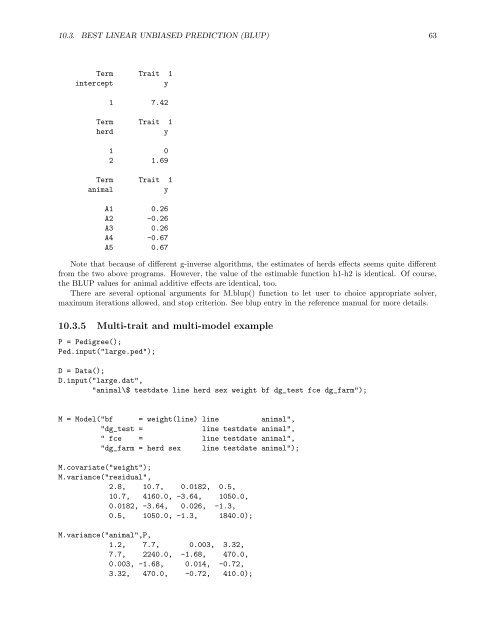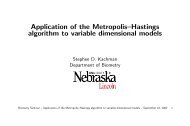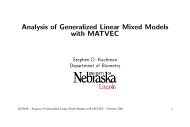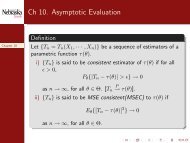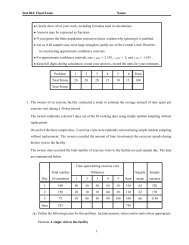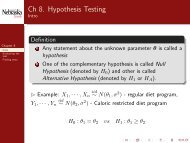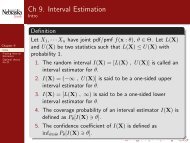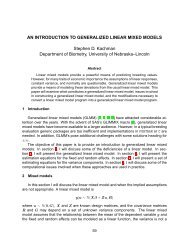Matvec Users’ Guide
Matvec Users' Guide
Matvec Users' Guide
- No tags were found...
You also want an ePaper? Increase the reach of your titles
YUMPU automatically turns print PDFs into web optimized ePapers that Google loves.
10.3. BEST LINEAR UNBIASED PREDICTION (BLUP) 63<br />
Term Trait 1<br />
intercept<br />
y<br />
1 7.42<br />
Term Trait 1<br />
herd<br />
y<br />
1 0<br />
2 1.69<br />
Term Trait 1<br />
animal<br />
y<br />
A1 0.26<br />
A2 -0.26<br />
A3 0.26<br />
A4 -0.67<br />
A5 0.67<br />
Note that because of different g-inverse algorithms, the estimates of herds effects seems quite different<br />
from the two above programs. However, the value of the estimable function h1-h2 is identical. Of course,<br />
the BLUP values for animal additive effects are identical, too.<br />
There are several optional arguments for M.blup() function to let user to choice appropriate solver,<br />
maximum iterations allowed, and stop criterion. See blup entry in the reference manual for more details.<br />
10.3.5 Multi-trait and multi-model example<br />
P = Pedigree();<br />
Ped.input("large.ped");<br />
D = Data();<br />
D.input("large.dat",<br />
"animal\$ testdate line herd sex weight bf dg_test fce dg_farm");<br />
M = Model("bf = weight(line) line animal",<br />
"dg_test =<br />
line testdate animal",<br />
" fce = line testdate animal",<br />
"dg_farm = herd sex line testdate animal");<br />
M.covariate("weight");<br />
M.variance("residual",<br />
2.8, 10.7, 0.0182, 0.5,<br />
10.7, 4160.0, -3.64, 1050.0,<br />
0.0182, -3.64, 0.026, -1.3,<br />
0.5, 1050.0, -1.3, 1840.0);<br />
M.variance("animal",P,<br />
1.2, 7.7, 0.003, 3.32,<br />
7.7, 2240.0, -1.68, 470.0,<br />
0.003, -1.68, 0.014, -0.72,<br />
3.32, 470.0, -0.72, 410.0);


